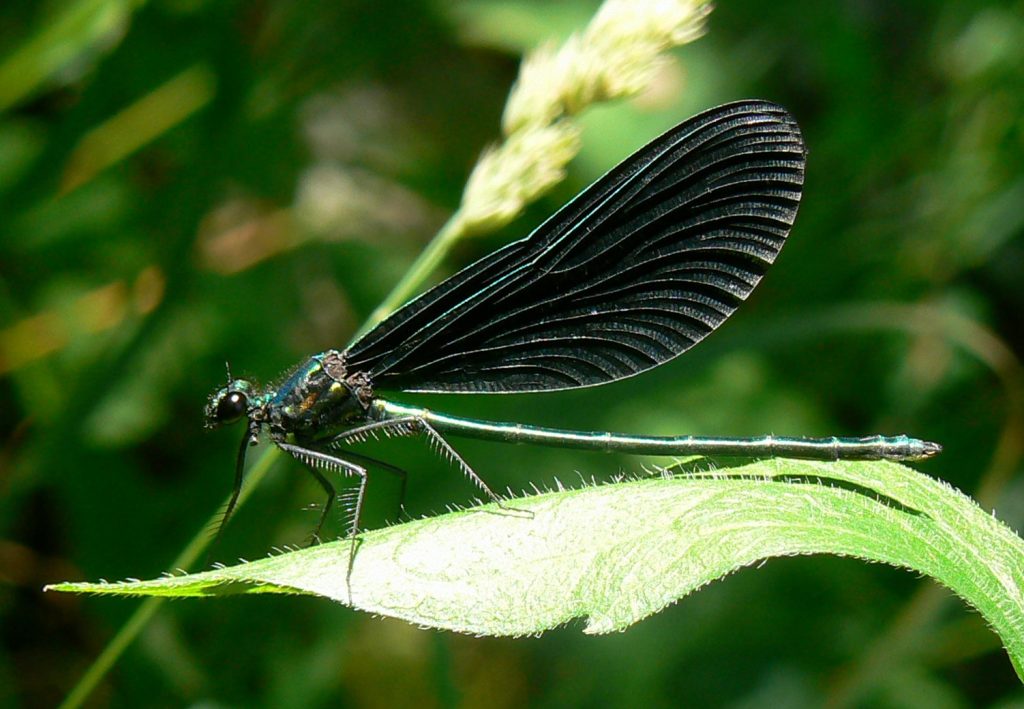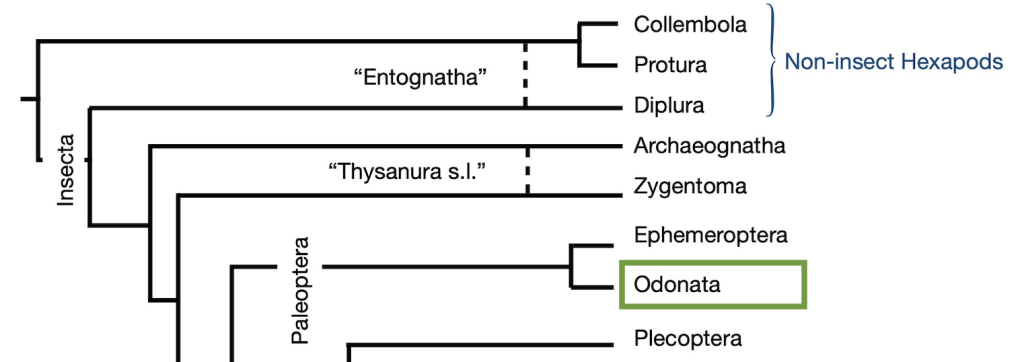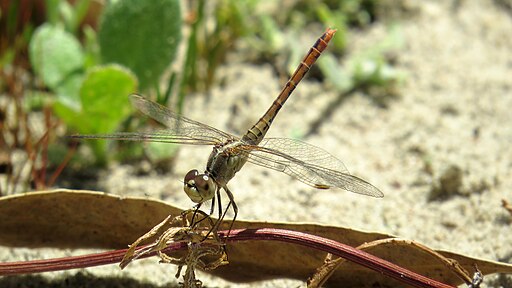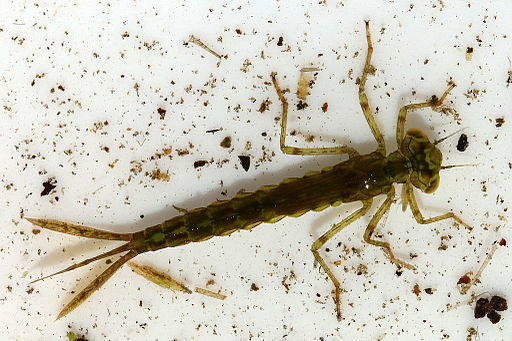16 The Orders of Insects: Odonata


Order Odonata: Dragonflies and Damselflies
Order Odonata: Suborders Anisoptera & Zygoptera
- common names are dragonflies (Anisoptera) and damselflies (Zygoptera)
- Odonata comes from the Greek ‘odon’ which means ‘tooth’, referring to the strong, toothed jaws
- about 5500 species worldwide; about 330 species in Australia; two main suborders, both found in Australia
- require water to breed
- both adults and nymphs are predatory
- Fast fliers, use sight to locate and track the flight of prey, which is captured in flight
- mating takes place in flight
- aquatic nymphs

Characteristics of Odonata
Adults
- medium to large colourful insects with an elongate body; lengths ranging from 15-120 millimetres
- mobile head with large compound eyes widely separated in Zygoptera OR nearly in contact in Anisoptera
- three ocelli; small, bristle-like antennae; mouthparts mandibulate (with biting, chewing jaws)
- thorax stout with two pair of membranous, veined wings: fore and hindwings equal (Zygoptera) OR hind wings wider than fore wings (Anisoptera); (maximum wingspan 17cm!)
- abdomen slender with clasping organs
Immatures
- Nymphs aquatic, stout (Anisoptera) or narrow (Zygoptera).
- Nymphs have mandibulate mouthparts with an extensible labial “mask” used to capture prey
- Terminal or rectal gills: abdomen bears 3 large caudal tracheal gills in Zygoptera OR elaborate tracheal network in gills on inner rectal wall replaces external gills in Anisoptera
The suborders of dragonflies and damselflies can be separated by several features:
For adults:
Anisoptera (dragonflies): hind wings wider than fore wings; at rest, the wings of dragonflies are spread out perpendicular to the body (resembling aircraft wings); dragonflies tend to be more strongly built insects
Zygoptera (damselflies): fore wings and hind wings equal in size; damselflies bring their wings together loosely over the back of the abdomen; damselflies tend to be rather delicately built.
For nymphs:
Dragonfly nymphs are heavily built mud-dwellers.

Damselfly nymphs are more delicate and frequent tangled vegetation at the sides of the stream or pond and have two flattened abdominal appendages that are absent in dragonfly nymphs.

Importance
Dragonflies and damselflies form an extremely important group of predacious insects in stream and pond ecosystems. They are responsible for population control on a number of associated insect species. The adults are quite long lived and consume large quantities of insects over many weeks.
Activities
- Watch this 15-min video clip about dragonflies (YouTube, 14 m 54s).
- Watch this 4 min movie of dragonfly nymphs attacking prey (YouTube, 4m) and then look at the images in this paper that describes the structure of the unusual mouthparts of the larvae.
- Check out this link to dragonfly anatomy from Queensland Museum: Odonata anatomy.
Topic Review
Do you know…?
- differences between the Zygoptera and Anisoptera
- The two orders that comprise the Palaeoptera?
- The primary habitats of Odonata?

